Its first flight was in 1945, but it did not see combat until the Korean War.
All pilots are terrified of fire.
It takes discipline not to think about it unduly.
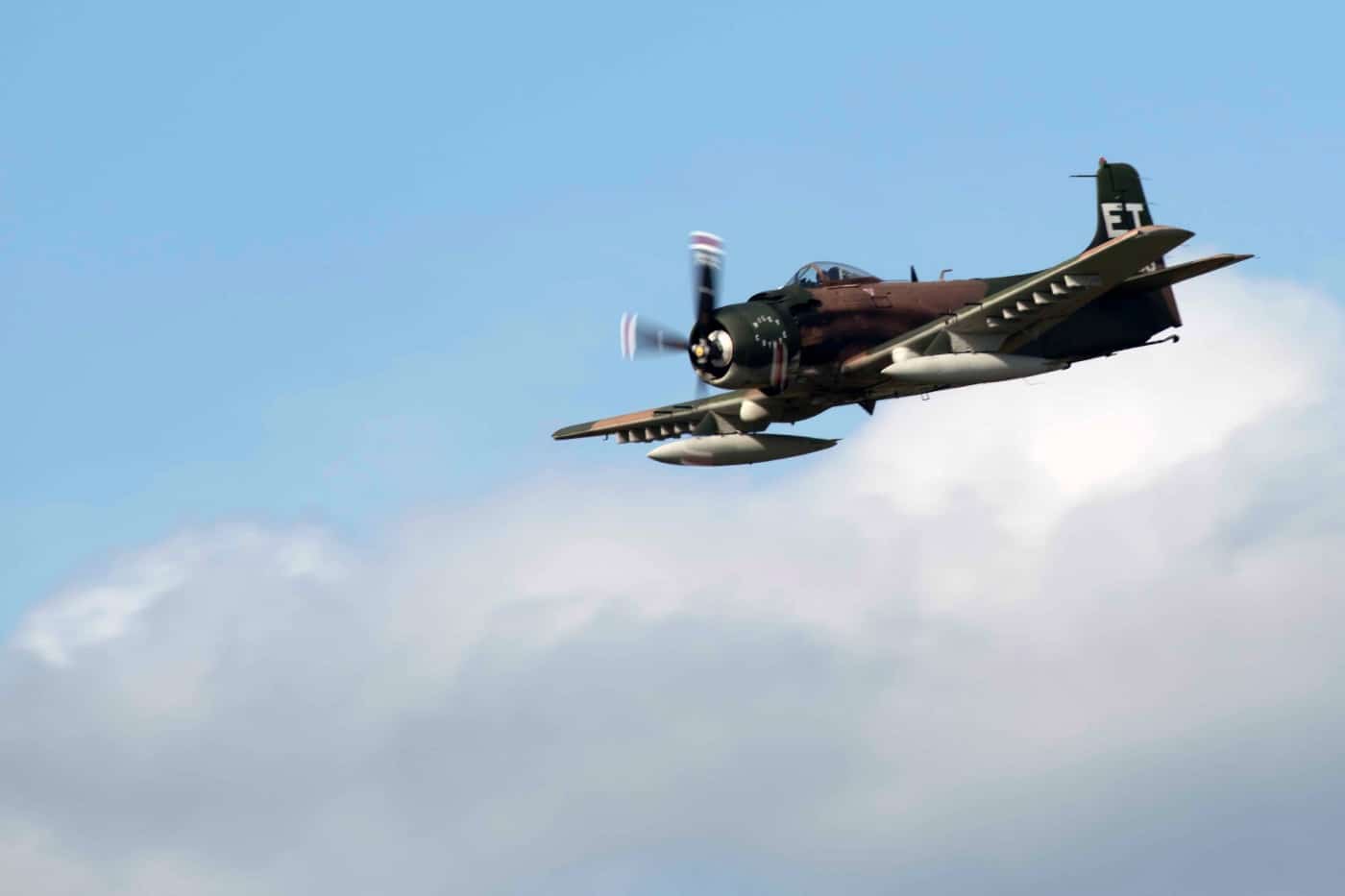
The A-1 Skyraider was developed in World War II and saw combat service in both Korea and Vietnam. Image: Senior Airman KathrynR.C. Reaves/U.S.A.F.
If something goes wrong, theres just no place to go.
Burning to death in flight is a phobia common to all aviators.
The unnatural way he faced that fear earned him the Medal of Honor.
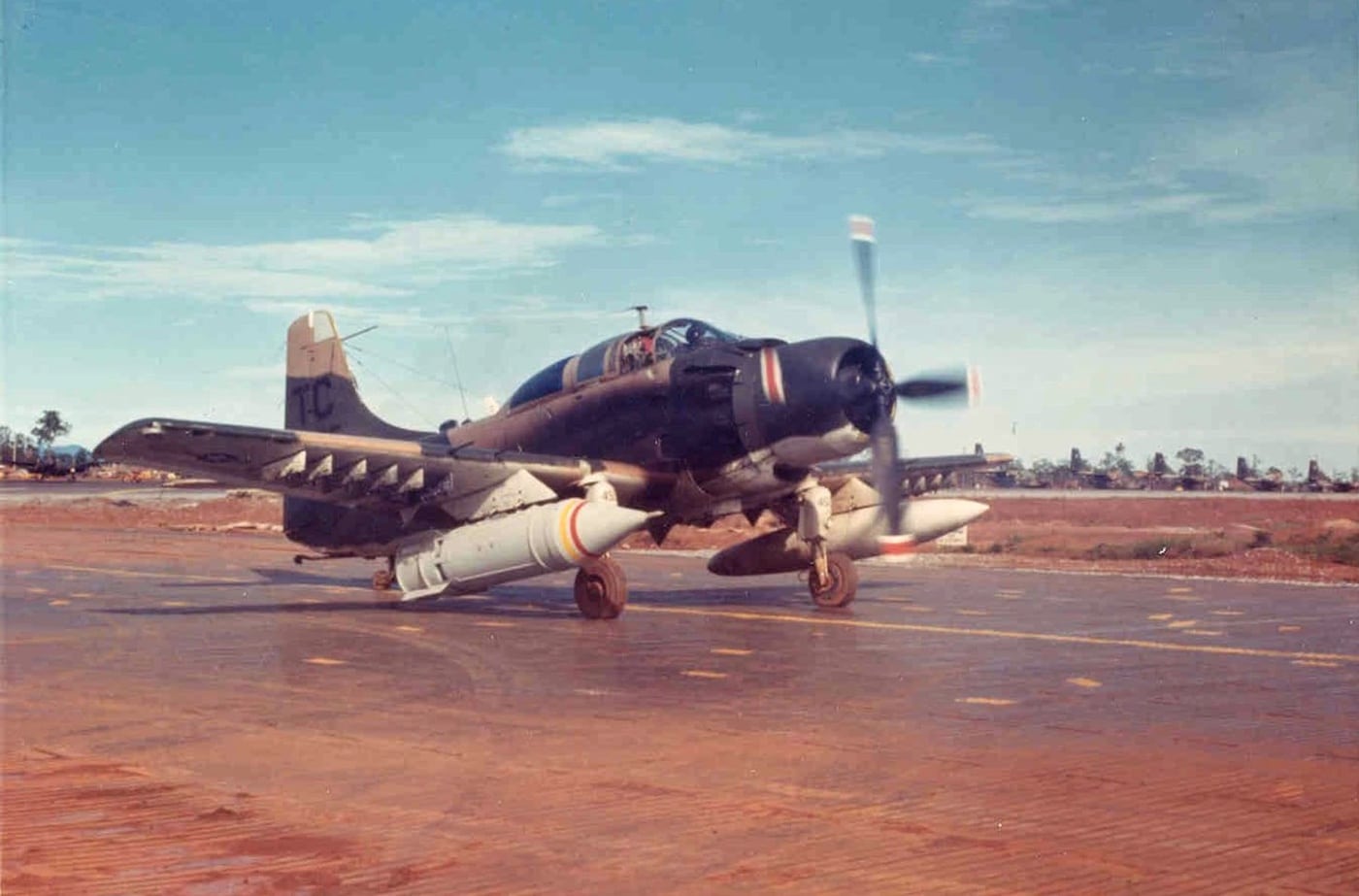
A Douglas A-1E Skyraider carrying a BLU-72/B FAE (Fuel/Air Explosive) bomb under the right wing during take-off on September 29, 1968. Image: U.S.A.F.
Then he heard it.
1968 was the middle of the Space Age.
The U.S. military operated the most advanced jet combat aircraft in the world.
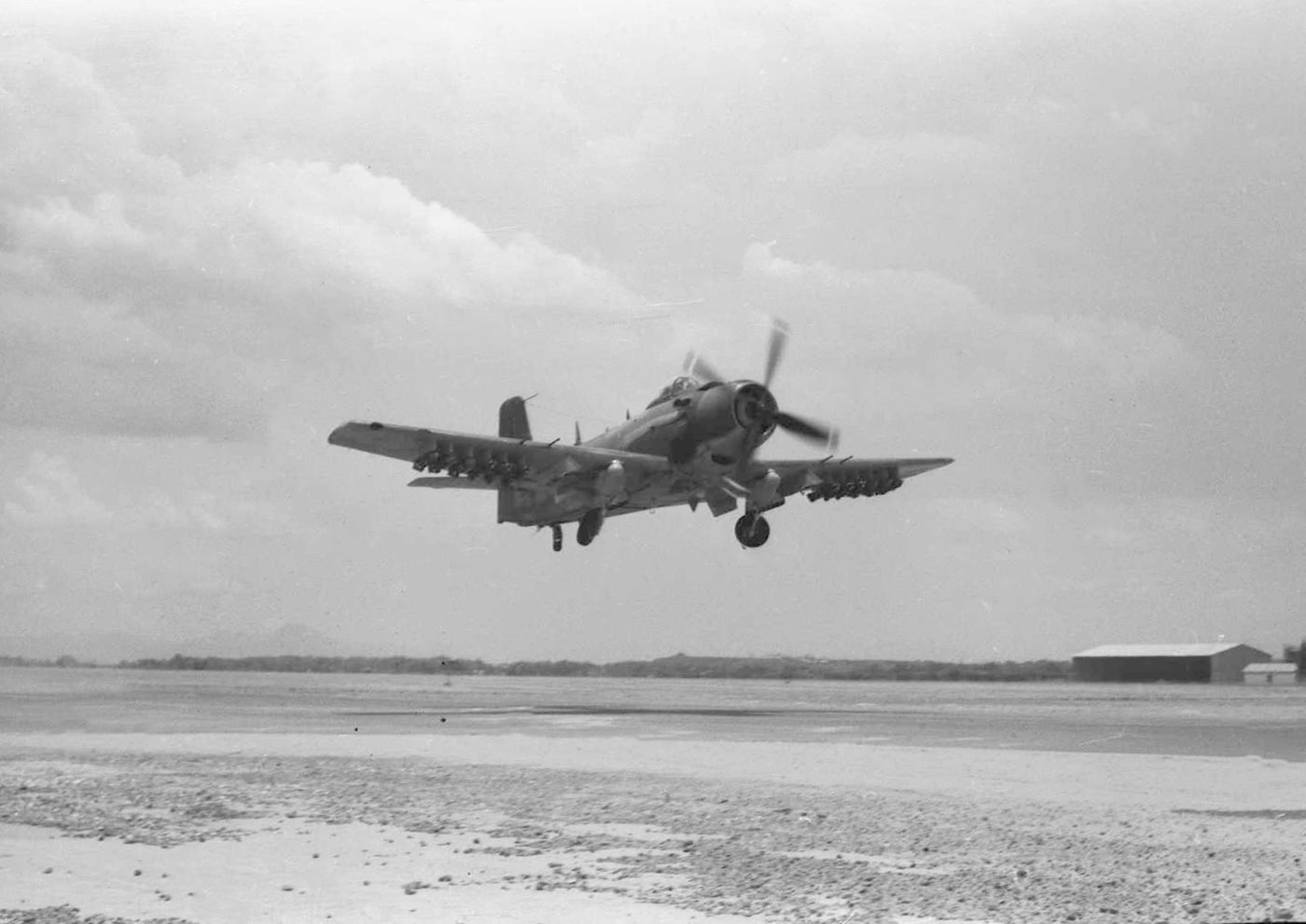
An A-1 Skyraider takes off from Da Nang Air Base on a combat mission, circa 1964.Image: U.S.M.C./CC BY 2.0
However, this was something different.
What this helpless pilot heard was the deep, throaty rumble of a Wright R-3350 Duplex-Cyclone radial engine.
That sound would have been right at home in the skies over Europe during World War II.

To that downed American pilot, the growl of that massive piston-driven engine was the sound of angels singing.
Everyone called the Skyraider the Spad after the famed French fighter of WWI fame.
When assigned to combat search and rescue duties, the Skyraider was called Sandy.
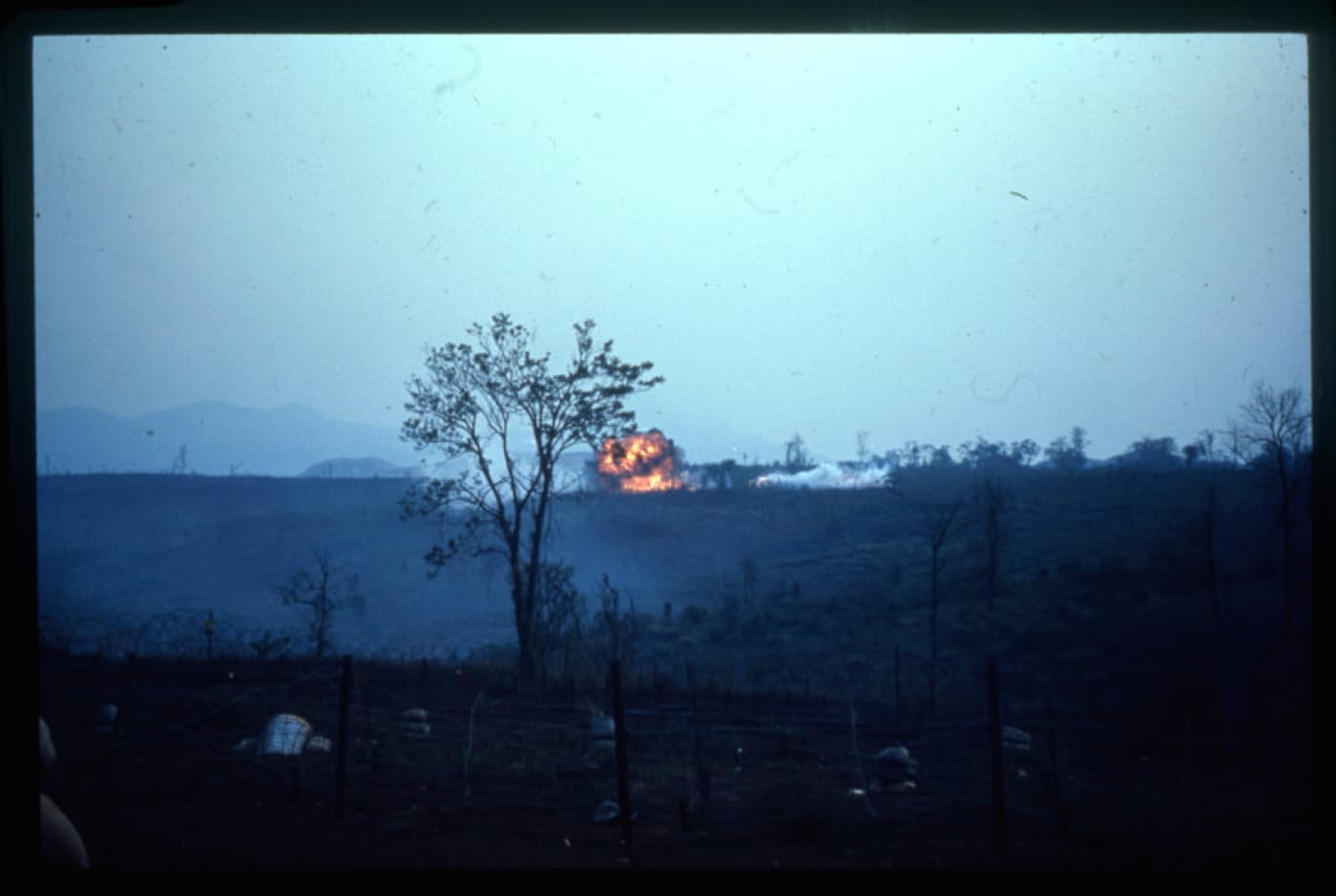
Napalm and bombing runs by Skyraiders on NVA digging trenches around the Khe Sanh Combat Base in February/March 1968.Image: U.S.M.C./CC BY 2.0
Sandys would fly cover while a Jolly Green Giant helicopter recovered the downed pilot.
While they had radio contact with the isolated aviator, they did not yet have his exact location.
Everything else turned on that piece of information.
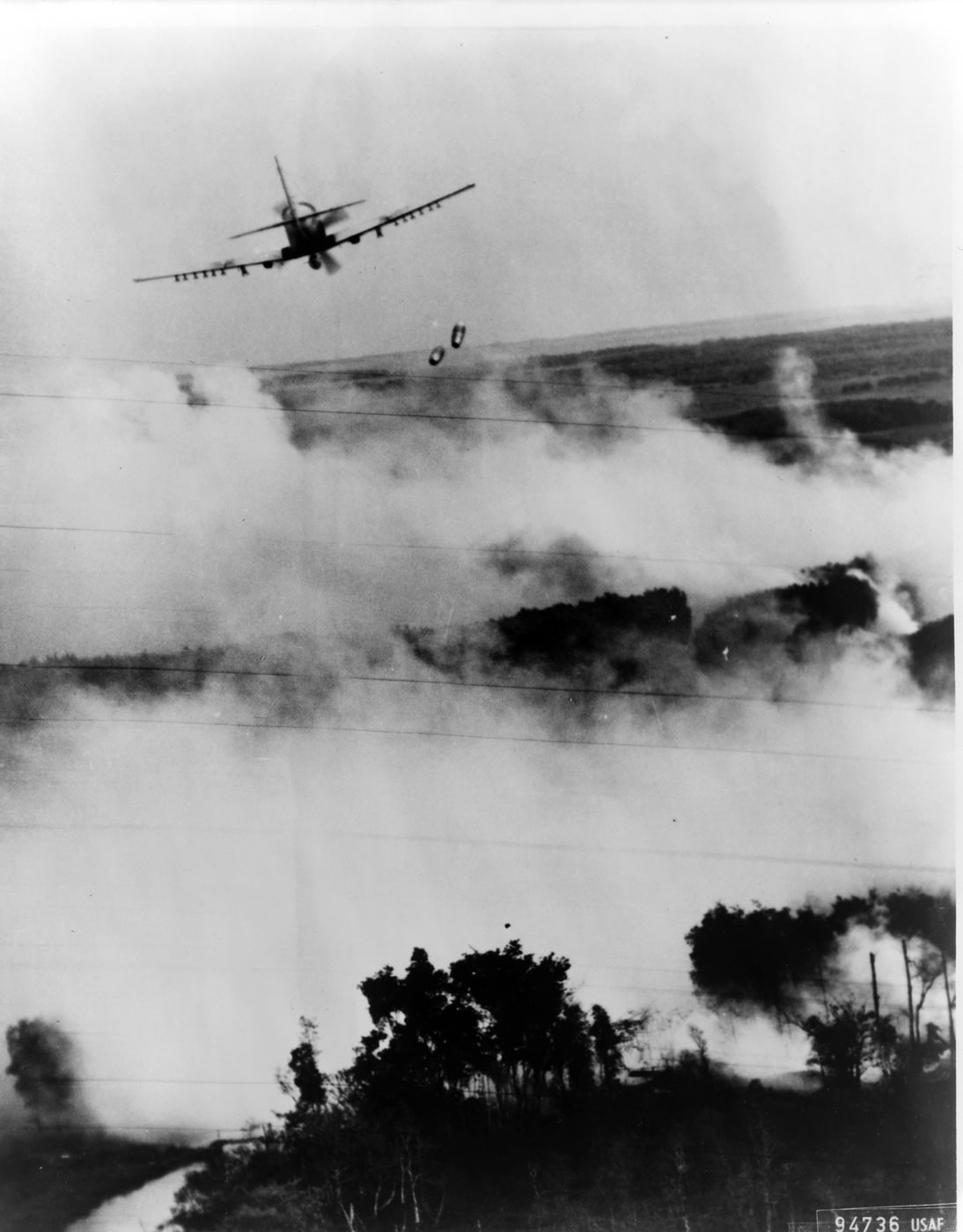
This Republic of Vietnam Air Force A-1 Skyraider delivered napalm in this strike against North Vietnamese positions. Image: U.S.A.F.
Jones dove his heavy strike aircraft down on the deck and began looking for trouble.
Suddenly the North Vietnamese defenders opened up with a ZSU-23-2 twin-barrel 23mm antiaircraft gun.
AAA (anti-aircraft artillery) was the alpha killer of airplanes on low-level strike missions.
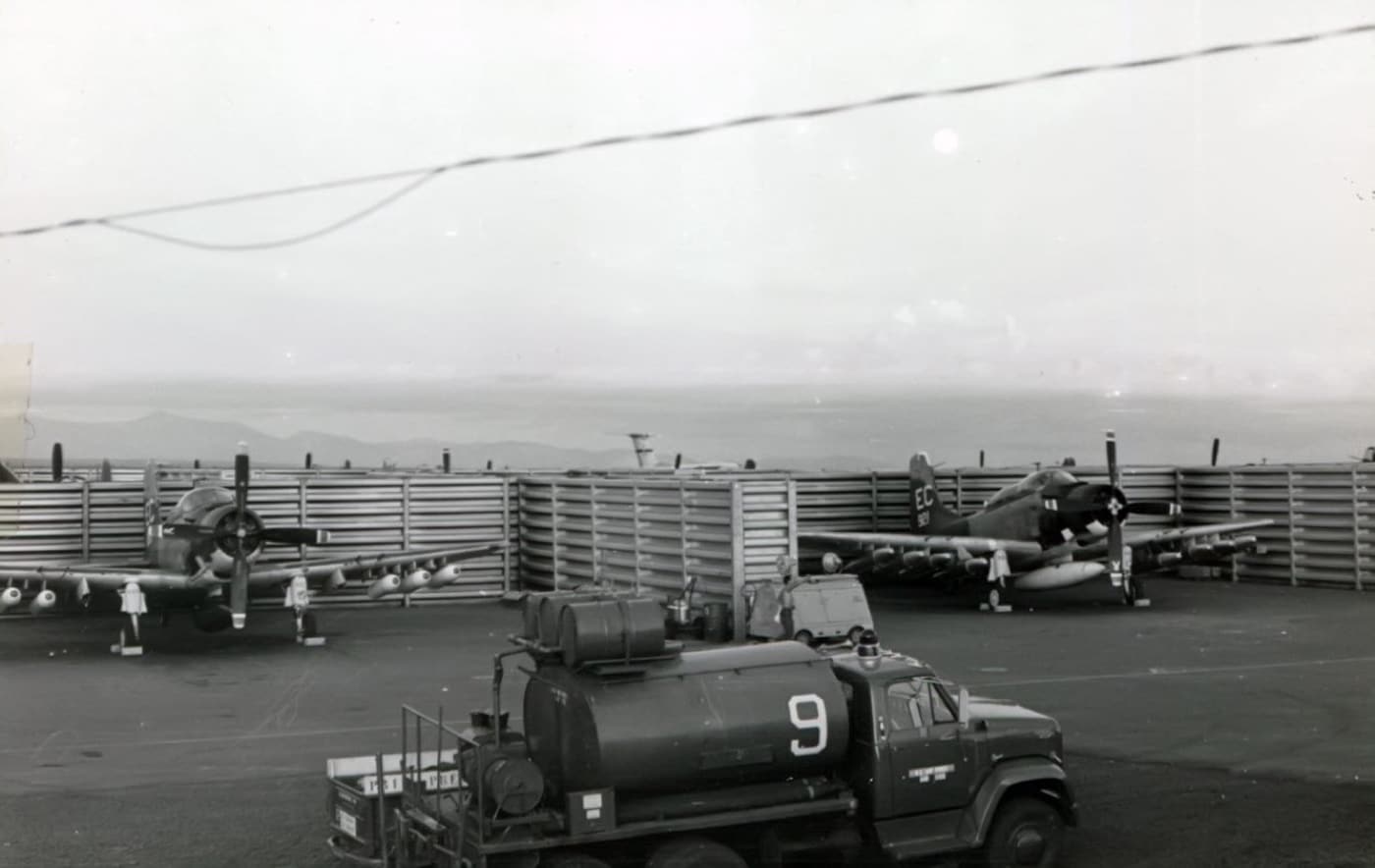
A fire department water truck was used to clean the 6th Special Operations Squadron Skyraider aircraft at Pleiku Air Base, Republic of Vietnam, 1967. Image: U.S.A.F.
Several rounds struck Jones Skyraider, and the cockpit filled with smoke.
However, Lt. Col. Jones knew what was riding on this.
This time he zeroed the pilot as well as the nearby ZSU that had shot up his airplane.
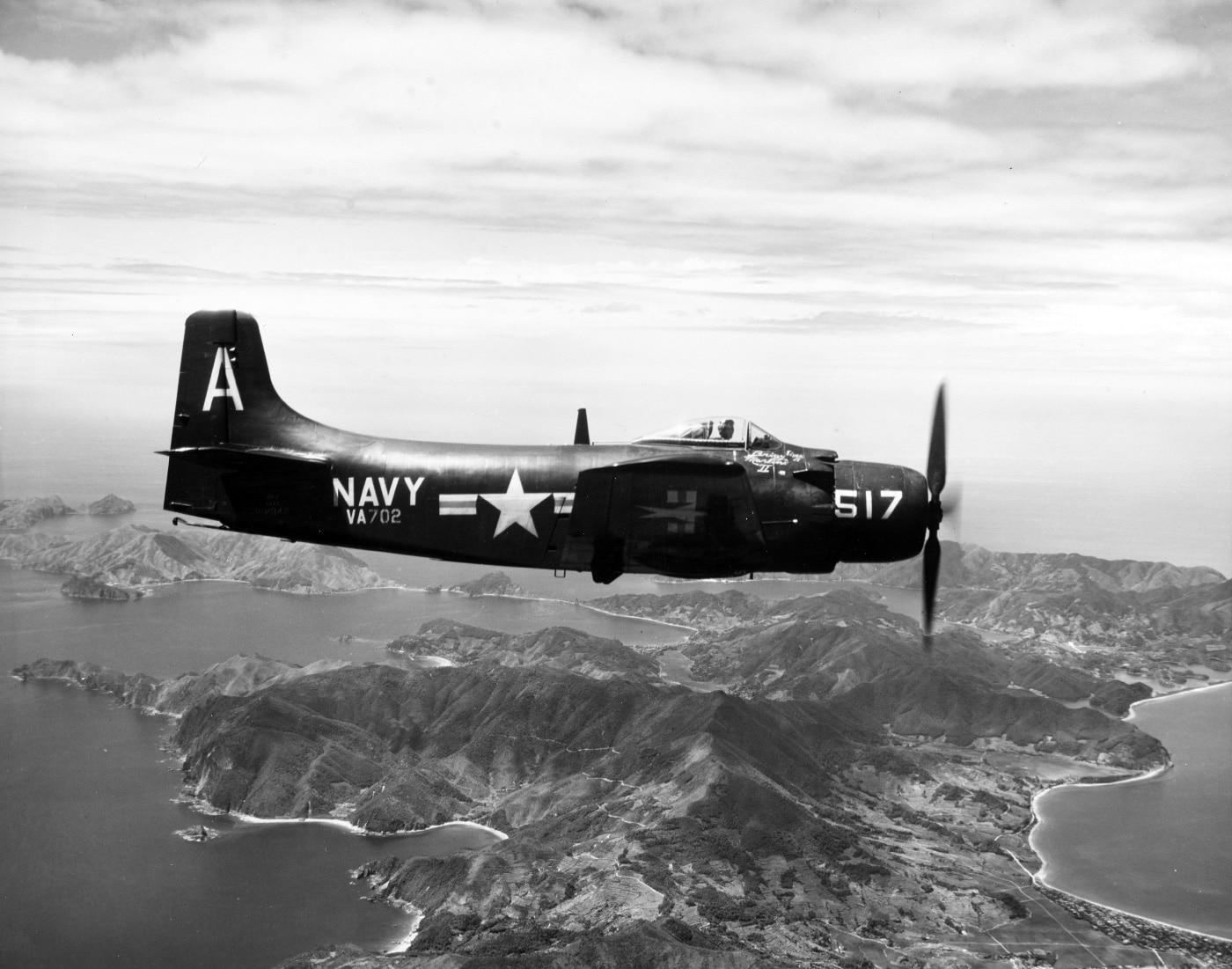
U.S. Navy Douglas Skyraider attack plane on patrol from USS Boxer (CV-21) in September 1951. The ship was en route to the Korean combat area. Image: NARA
On his second pass, nearby NVA guns pounded his big airplane mercilessly.
One round detonated the Yankee Extraction System rocket located behind his headrest.
This rocket-assisted ejection gadget subsequently burned inside the cockpit, filling the space with searing flames.
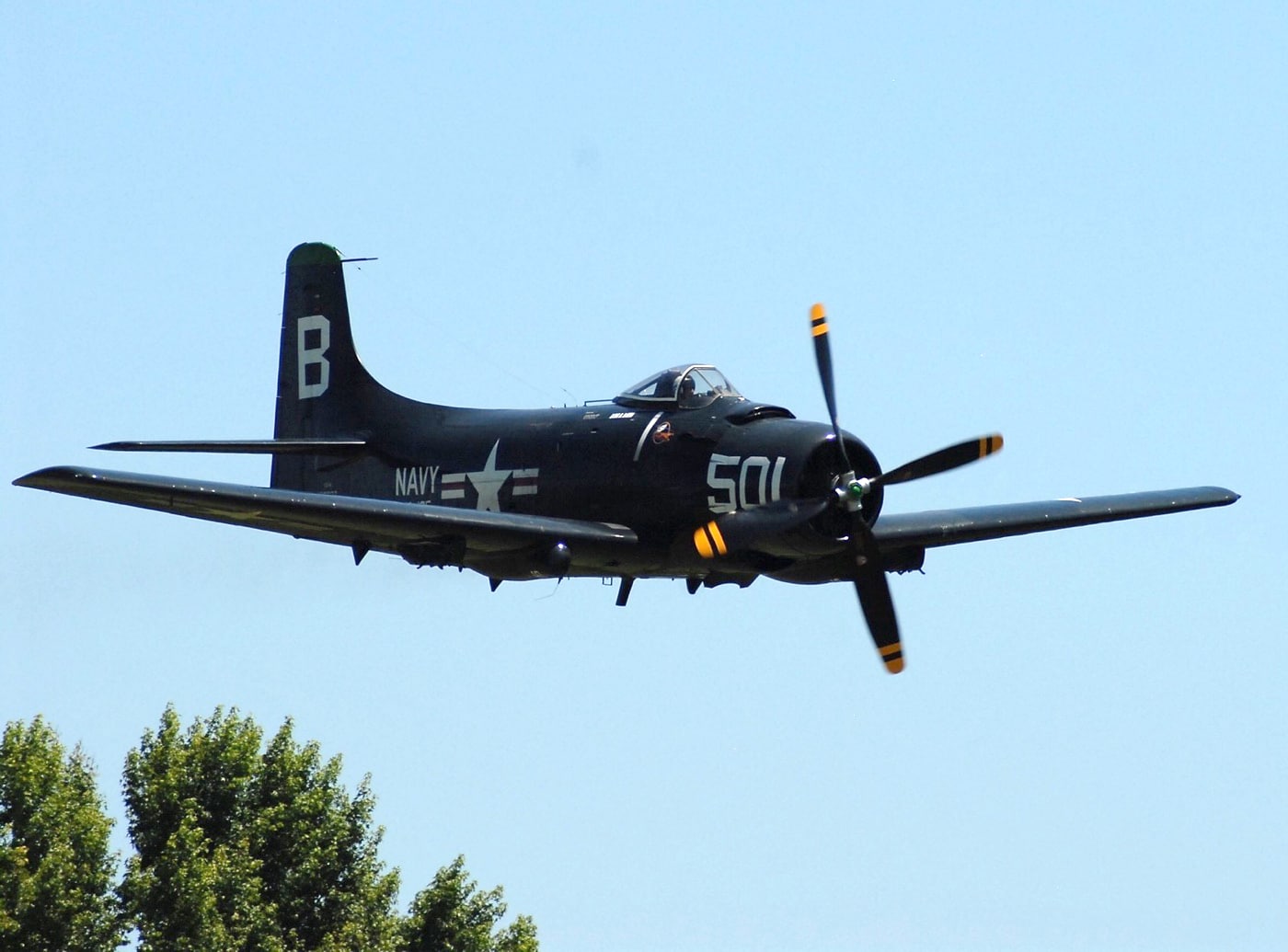
A Douglas AD-4 Skyraider during a flight demonstration at the Military Aviation Museum in Virginia Beach, Virginia. Image: MaxLonzanida/U.S. Navy
Jones blew the canopy off of his airplane, which made the fire briefly worse.
However, his ejection system was spent.
Now there was no way for the badly burned pilot to egress his aircraft.
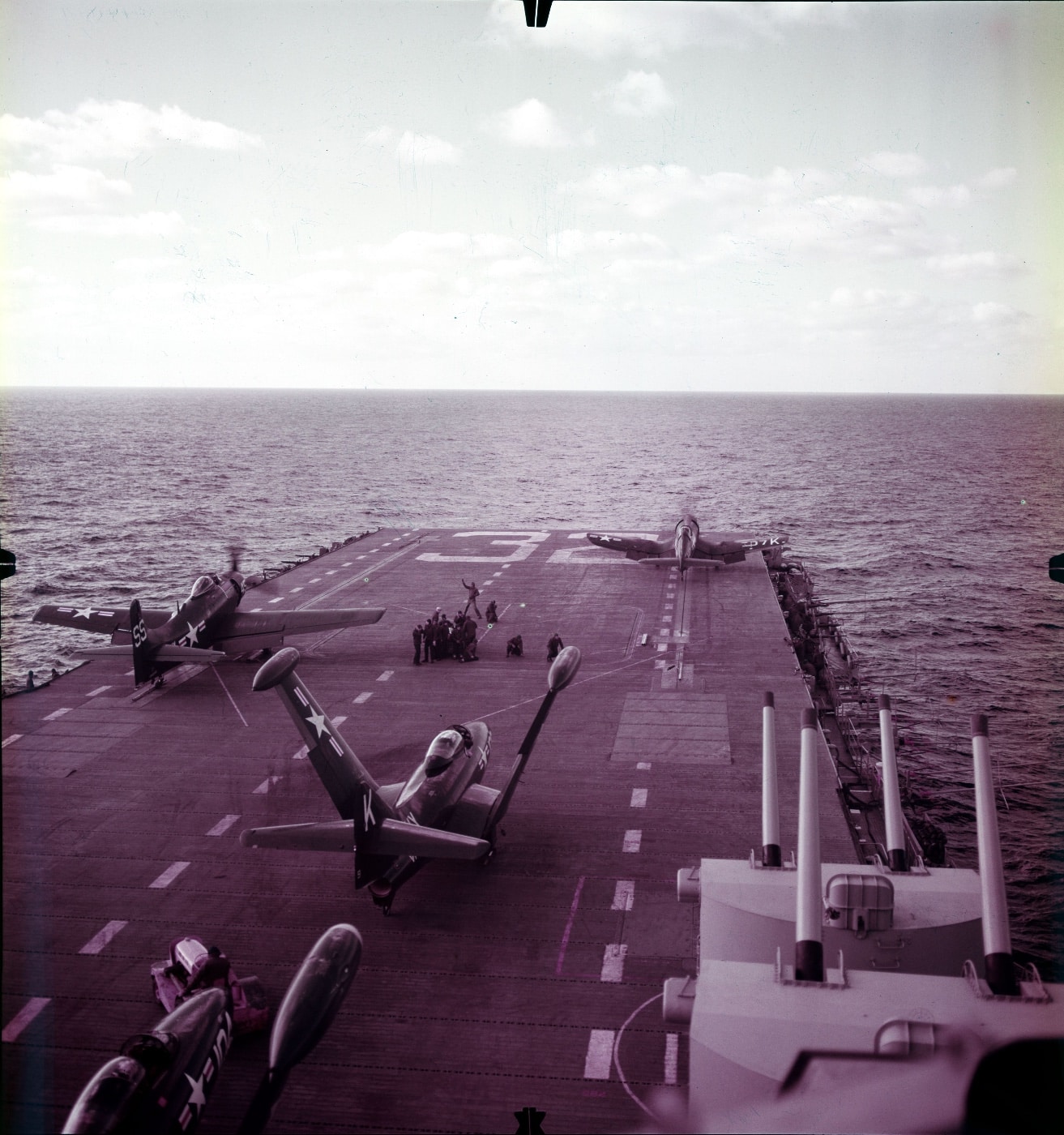
During the Korean War, a Skyraider waits to be launched from the port side catapult on the U.S.S. Leyte (CV-42). Also shown are anF4U Corsairand an F9F Panther. Image: NARA
Jones had not been able to notify the rest of his team of the downed pilots location.
The battle damage had destroyed his radios.
Now desperately burned, Jones wracked his stricken plane over and firewalled the throttle.
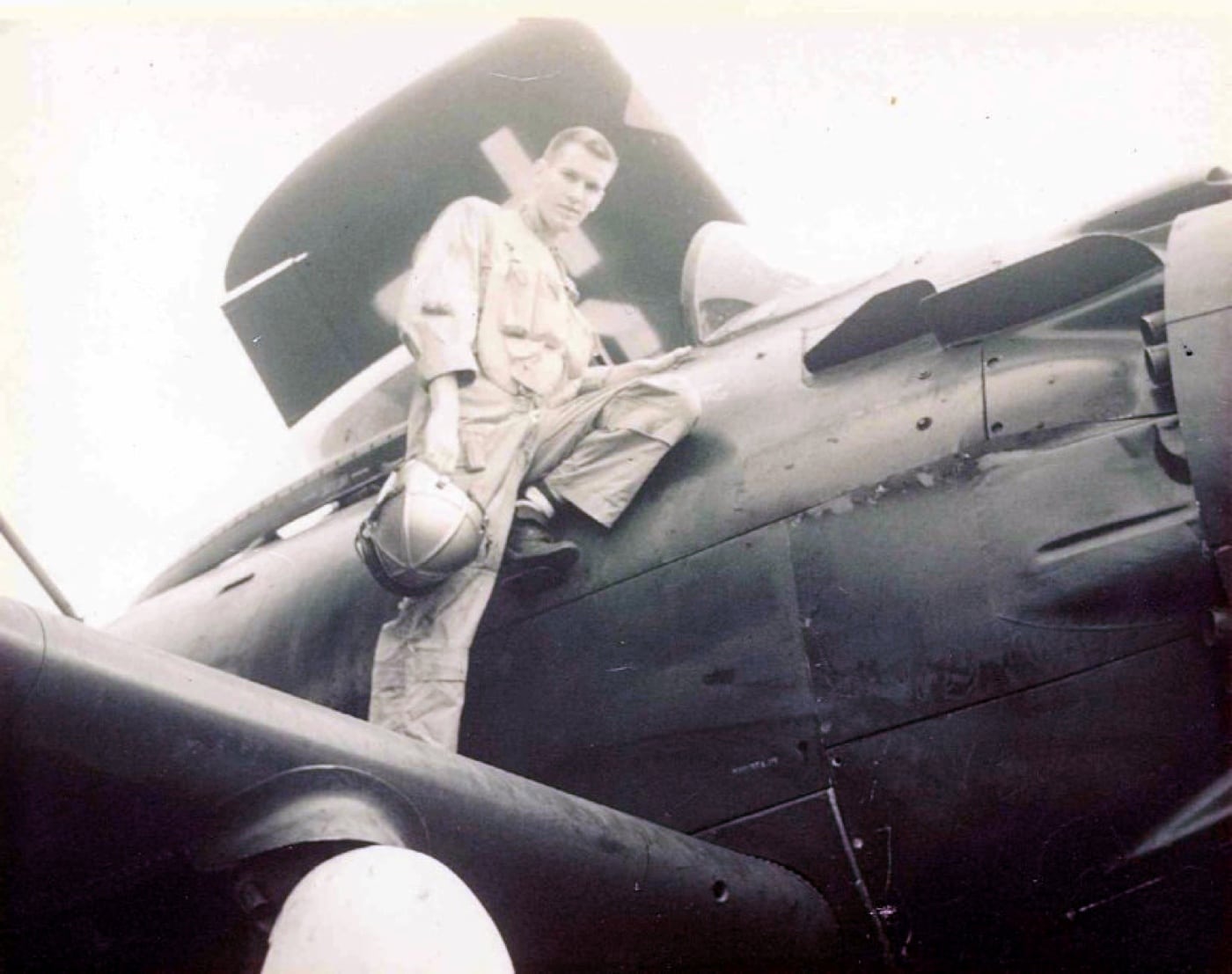
Young naval aviator John B. McKamey standing on the wing of a Douglas A-1 Skyraider in 1951. In 1965, McKamey was shot down in Vietnam and spent nearly eight years as a prisoner of war. Image: U.S. Navy
He successfully landed his big airplane and was rushed to surgery.
This information was radioed back to the rescue package that was working the area.
The downed pilot was successfully recovered later that day.
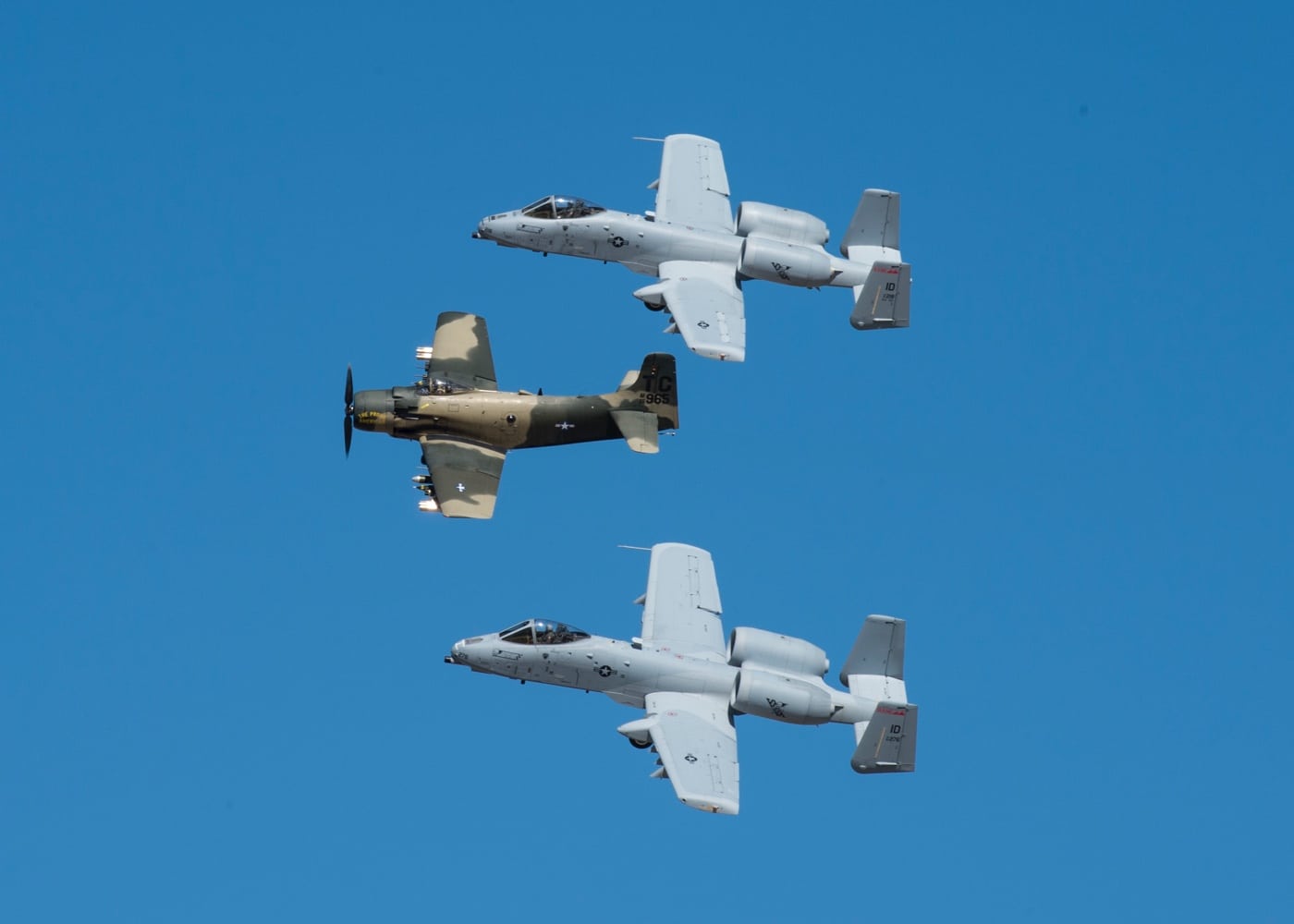
An A-1 Skyraider is flanked by a pair of A-10 Thunderbolt IIs in an aerial demonstration at a 2017 airshow in Boise, Idaho. Image: Airman 1st Class Mercedee Schwartz/U.S. Air National Guard
The Skyraider was designed to be a carrier-based, single-seat, long-range, high-endurance torpedo/dive bomber.
Prior to entering active service with the U.S. Navy, Japan formally surrendered and ended the Second World War.
In 1946, the Skyraiders designation was changed to AD-1.
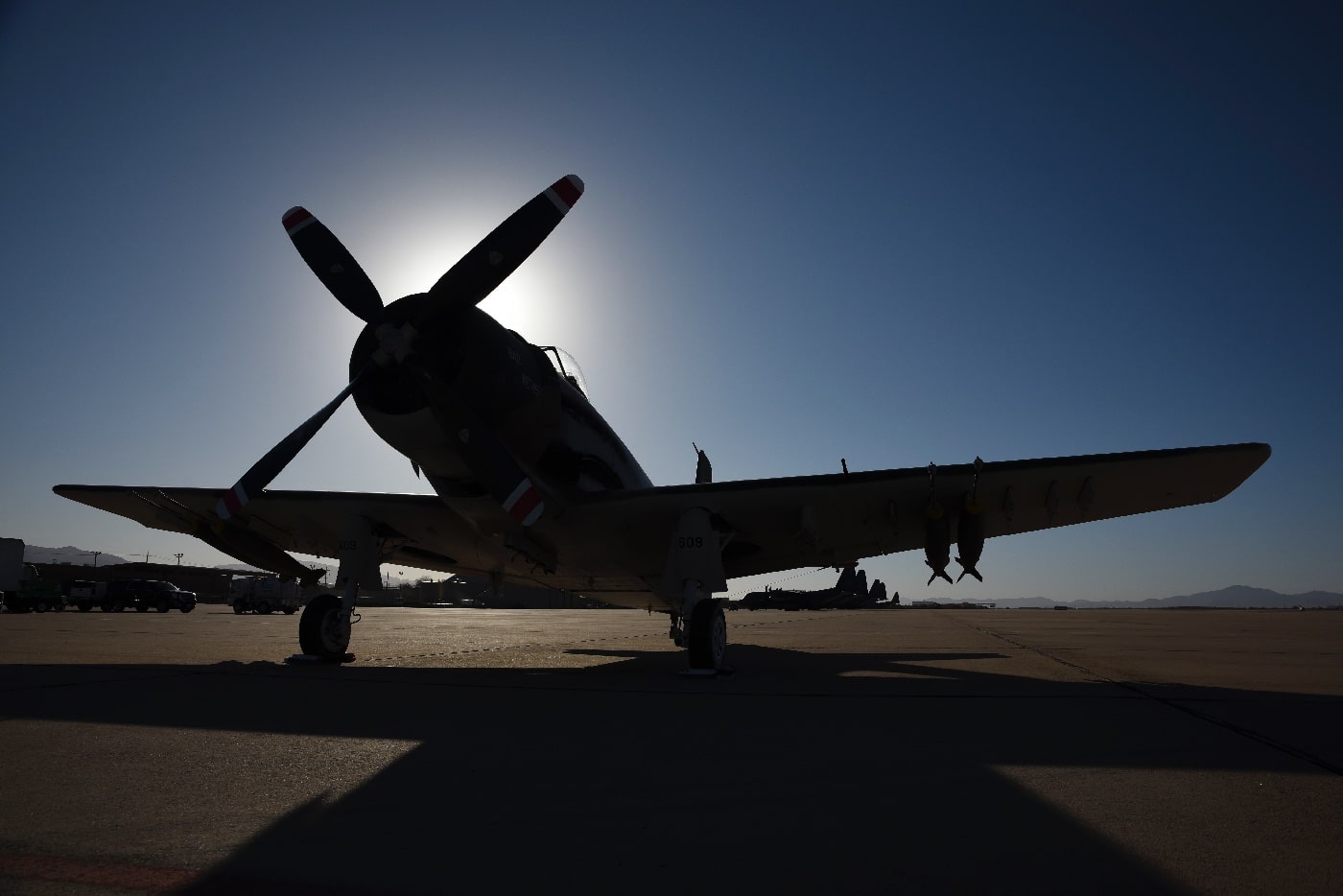
An A-1 Skyraider sits on the flight line at Davis-Monthan Air Force Base. The Skyraider provided close-air support in Korea and Vietnam. Image: Senior AirmanNicholas Ross/U.S.A.F.
This gave the Douglas aircraft the capability of carrying a breathtaking array of ordnance.
In addition to being powerful, the Wright engine was rugged.
The big 18-cylinder air-cooled radial engine proved exceptionally resistant to battle damage.

Douglas eventually produced versions of the Skyraider that carried two, three or four aircrew members.
Variants were capable of night attack operations and electronic warfare missions.
The entire production run of 3,180 aircraft progressed through seven major variants.
The U.S. Navy and U.S. Marines used the Skyraider during the Korean War.
As the new jet-powered A-6 Intruder was delivered, the US Navy phased out the rugged old Skyraider.
Many of the Navys Skyraiders were transferred to the Republic of Vietnam.
The South Vietnamese Air Force used the Skyraiders extensively in ground attack roles.
The United States Air Force also adopted the plane during the Vietnam War.
frequently used the A-1 in the Sandy role to recover lost pilots.
The last Skyraiders were phased out of the active U.S. inventory in 1973.
However, their legacy lives on.
The grunts and downed aviators who were supported by it veritably worshipped the machine.
In a world of fast-moving attack jets, it was the lumbering Skyraider that most reliably brought the pain.
Throughout the Korean War, Marine and Navy Skyraiders were workhorses in ground attack roles.
More than 100 Skyraiders were lost in combat.
Chicom fighters launched an unprovoked attack against a DC-4 Skymaster civilian airliner operated by Cathay Pacific Airways.
During a search for survivors, Skyraiders shot down the La-11 fighters.
These were the first gun kills of the war.
He was the first Navy pilot lost during the war.
In October 1965, to commemorate the 6 millionth pound of ordnance dropped over Vietnam, Cmdr.
Clarence Stoddard of VA-25 dropped a Navy surplus toilet along with the rest of his standard combat load.
The Air Force, however, did not have a clear upgrade path.
While the Skyraider performed well during the conflict, losses were heavy many due to ground fire.
The initial proposal indicated a need for increased survivability and additional ordnance delivery.
By 1970, the Air Force requirements were updated to include all weather and anti-tank capabilities.
The result was theFairchild A-10 Thunderbolt II.
During Vietnam, more than 250 of the A-1 planes and too many pilots were lost.
Lt. Col. Jones was promoted to Colonel and awarded the Medal of Honor.
Sadly, he died in a Virginia aircraft accident before the MoH presentation.
Go to forum thread




